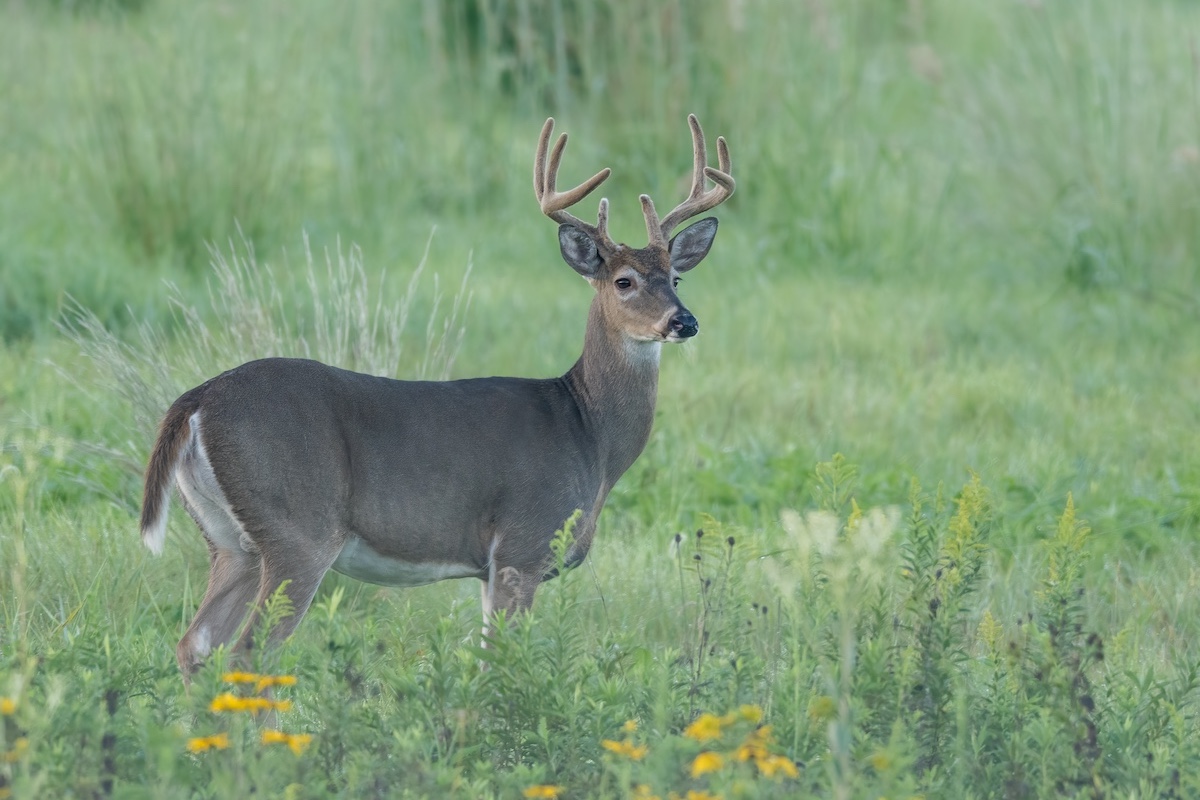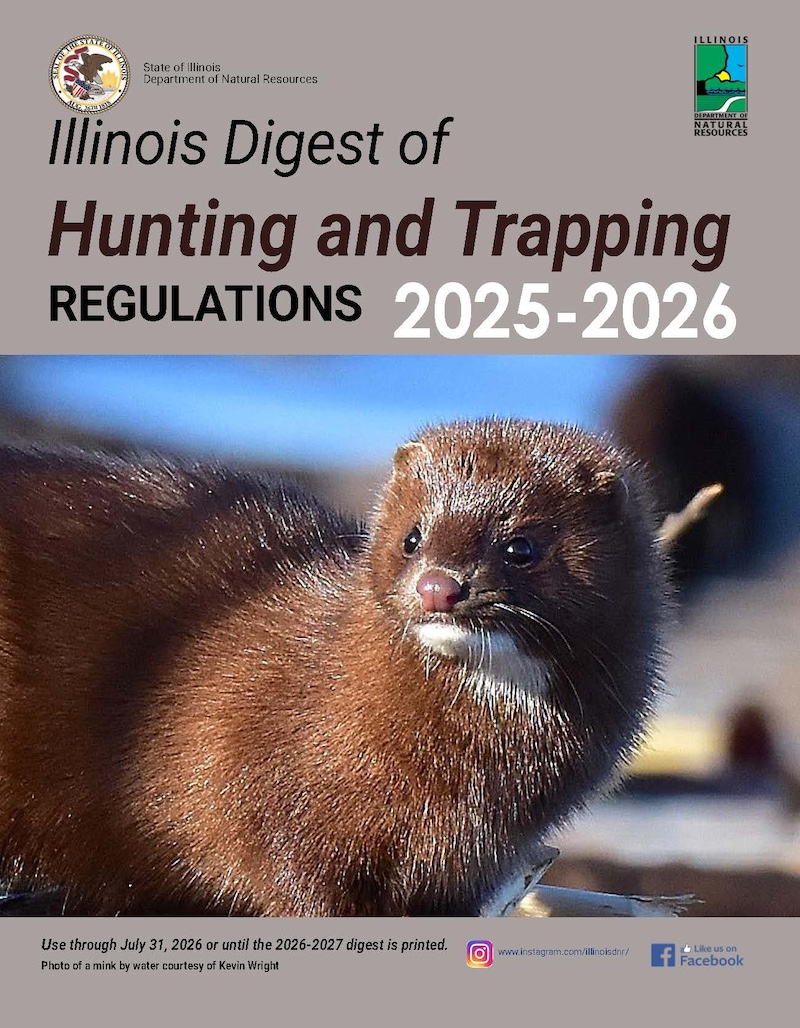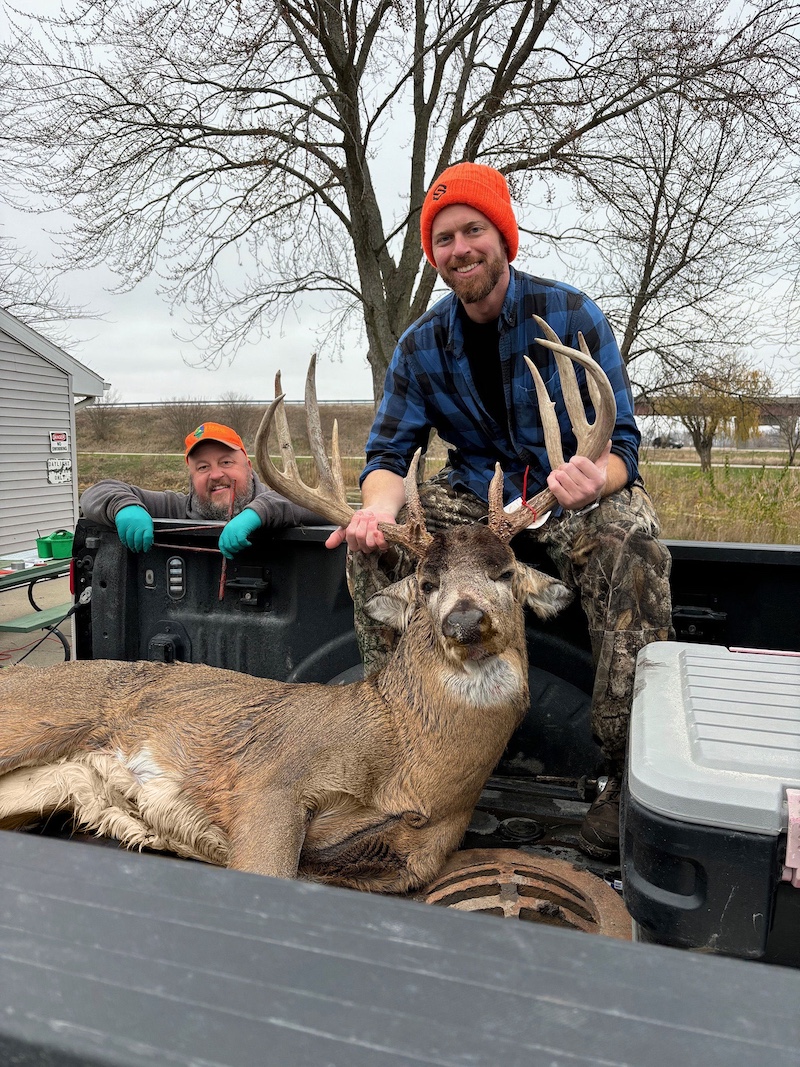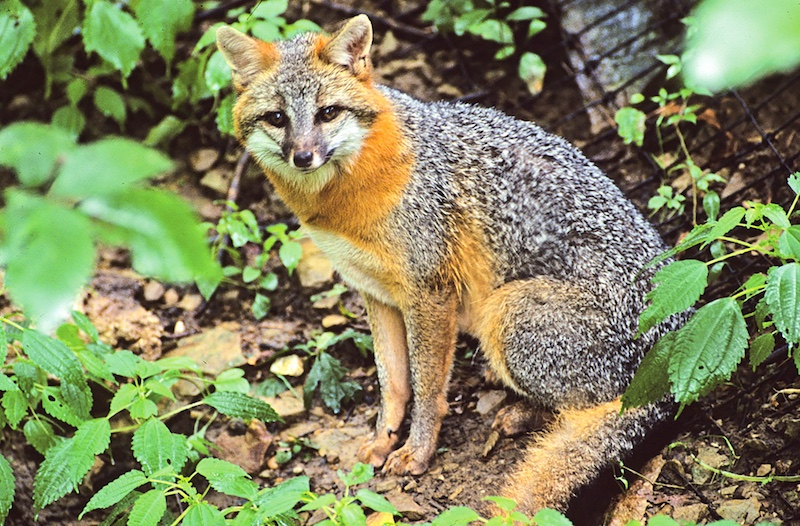
Photo by Leroy Buckley.



Photo by Leroy Buckley.
This cover of this year’s Illinois Digest of Hunting and Trapping Regulations features a mischievous American mink (Neovison vision) on pause as he scampers along a creekbed. The image was captured by wildlife photographer Kevin Wright.

A member of the mustelid or weasel family, the American mink is native to all 102 Illinois counties. Bigger than its family namesakes, the least and long-tailed weasel, minks are semi-aquatic carnivores. Minks are identifiable by their slender bodies with short legs, cloaked in reddish dark brown fur and a small white chin patch. While they share many characteristics with the river otter, mink are much smaller, at roughly one to three pounds. Minks are nocturnal or crepuscular, meaning they are most active during the nighttime or twilight hours, and are often found along or near wetlands, ponds, rivers, creeks, and lakes, as their carnivorous diet primarily consists of fish, crayfish, amphibians, small birds and small mammals.
Illinois Department of Natural Resources (IDNR) Division of Wildlife Resources staff coordinated the preparation of this annual Digest with many of the changes of note this year in relation to changes in programs or new season regulations announced earlier this year by IDNR. Printed copies of the 2025-2026 Illinois Digest of Hunting and Trapping Regulations can be found at vendors located throughout the state starting in early August. You can also stop by the Illinois State Fair tent in Conservation World, August 7 through 17, 2025, to inquire about a printed copy. To pick up a printed copy elsewhere, find a vendor near you. A digital version of the Digest can be found online at HuntIllinois under the “Hunting and Trapping Digest” tab.
As of April 2025, IDNR announced that Chronic Wasting Disease (CWD) has been detected in four additional Illinois counties. CWD is an always-fatal prion-linked neurological disease that is transmitted through direct contact with infected deer within a habitat. Since 2002, IDNR has worked to maintain healthy deer populations and manage the spread of CWD through methods such as mandated deer check stations and by holding a Special CWD Deer Season after firearm and archery seasons have concluded. Sampling for possible CWD-positive deer that have been harvested and the success of deer hunters will pare back large populations and reduce the danger of transmission between infected deer and healthy deer. For more information about the additional detections in Illinois, see an OutdoorIllinois Journal article from May 2025.

With the addition of four counties to the ranks of CWD-monitored hunting areas, IDNR will be adding mandatory deer harvest registration or check stations in Bureau, Ford and Lee counties. This means that hunters in those counties will no longer be able to report their filled permits using the call-in or online systems during the first and second firearm seasons (November 21-23, 2025 and December 4-7, 2025). Instead, hunters will be mandated to take their harvested deer to the county’s check station, where IDNR staff will record the hunter’s permit information and affix a check station tag to the deer. At these stations, hunters are allowed to have their deer tested for CWD infection. Hunters in Peoria and Adams counties will also have the opportunity to have their deer voluntarily sampled during the two weekends of firearm hunting. For a list of mandatory and voluntary check station locations, visit HuntIllinois.
Additionally, along with changes in harvest reporting, the four additional counties are also subject to new deer seasons and opportunities for hunters to assist in deer population management. A Special CWD hunting season is open January 1-4 and 16-18, 2026 in the existing 15 CWD management counties and will be open for the first time for in the newly detected counties. For more information about the Special CWD season and its regulations, visit page 20 of this year’s Digest or Hunt Illinois’ Seasons Information page.
Additionally, for the 2025-2026 season, the bag limit, meaning the maximum number of harvested birds per hunter for the day, will increase for northern pintails from the previous one bird to three birds.
Alternatively, IDNR has announced that the gray fox hunting and trapping seasons will be closed. House Bill 3760, which was first filed in February 2025, proposed an amendment to Illinois’ Wildlife Code that would allow the Director of IDNR to close a season or set restricted bag and possession limits for the gray fox in response to research and survey data indicating a decline in the population. The population decline is not a result of harvest in the state; instead, it is most likely the result of diseases such as canine distemper, as well as competition and predation from other canine relatives, including coyotes and domestic dogs. House Bill 3760 was passed through both branches of the state legislature and signed by the Governor in late June 2025, allowing IDNR to issue an emergency closure on the season through Administrative Rules. In the meantime, research on this species continues to better understand what has impacted the population thus far and what can be done to protect gray foxes and reverse the decline.

Finally, the Digest of Hunting and Trapping Regulations has added a few additions to the Public Hunt Area (PHA) tables. PHA tables are viewable from pages 54 to 60 and provide a large amount of information for readers, including the size of the PHA, along with a list of what species and seasons are offered at the location. With four new sites in the state, more than 500 acres of hunting ground have been added for Illinois public hunters.
In Region 1, the Donnelley State Fish and Wildlife Area-Putnam County Unit provides 255 acres of huntable ground open to deer archery and turkey fall archery hunting. In Region 4, Monroe County, Illinois Caverns State Natural Area provides 116 acres of huntable ground open to deer archery hunters. In Region 5, Union County, the Guthrie Cave Land and Water Reserve provides 80 acres of ground open to deer archery hunting. In Region 5, Jackson County, Ralph Clover State Natural Area provides 60 acres of ground open to deer archery, firearm and muzzleloader hunting; spring and fall turkey hunting; trapping; and squirrel, raccoon, opossum, red fox and coyote hunting.
The Digest is available in many formats, allowing hunters to access hunting and trapping information from a phone, tablet, computer or as a printed copy. The 2025-2026 Illinois Digest of Hunting and Trapping Regulations also includes a quick reference card with easily identifiable dates for seasons and lotteries, as well as daily and possession limits.
The 2025-2026 Digest of Illinois Hunting and Trapping Regulations and insert card will also be available in Spanish and Polish online at HuntIllinois and IDNR web sites.
Suggestions regarding the annual Digest are welcome and may be emailed to DNR.Wildliferecep@Illinois.gov.
Kaleigh Gabriel jest specjalistką ds. edukacji przyrodniczej (Wildlife Outreach Specialist) w Lewis and Clark Community College, pracującą w budynku Departamentu Zasobów Naturalnych Illinois, gdzie wspiera Division of Wildlife Resources. Dorastając na pograniczu hrabstw Sangamon i Christian, spędzała wiele czasu na polowaniu i wędkowaniu w Illinois. Uzyskała licencjat z pisania/dziennikarstwa na Manchester University w Indianie.
Prześlij pytanie do autora